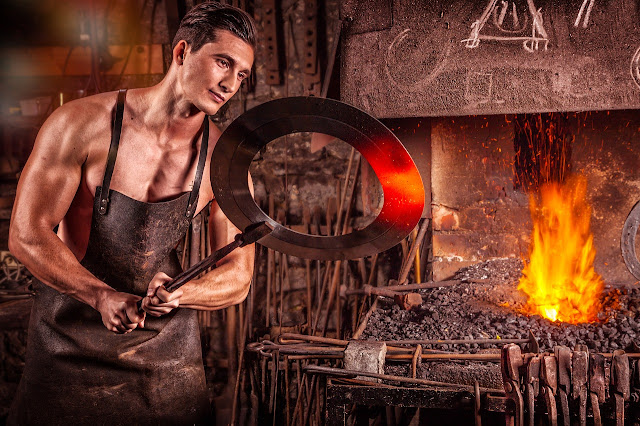Sheet metalwork is a process that has been around for centuries. In its earliest incarnation, sheet metal was used to create swords and other weapons. Over time, the process evolved, and sheet metal began to be used for other purposes, such as creating roofing materials and ductwork. Today, sheet metal work is essential to many industries, including construction, automotive, and aerospace.
The Earliest Uses of Sheet Metal Work
The first known use of sheet metal dates back to 4000 BC when it was used to create swords in ancient Mesopotamia. Then, around 1000 BC, Chinese metallurgists began using a process known as annealing to make weapons and tools from iron and steel. This process made the metal softer and more pliable, which made it easier to work with.
By the Middle Ages, European blacksmiths had discovered how to make steel, which was even stronger than iron. This new material quickly became famous for making armour and weapons. To make steel, blacksmiths would heat iron until it glowed red hot before dipping it into water or oil. This process, known as quenching, made the steel harder and more durable.
The Industrial Revolution and Beyond
The industrial revolution ushered in a new era for sheet metal work. With the advent of new technologies like the steam engine and the cotton gin, factories began popping up all over Europe and North America. These factories required large amounts of metal for their machinery, which created a demand for sheet metal workers.
With the advent of new technologies like the rolling mill and the steam engine, manufacturers could mass-produce sheet metal much more efficiently than ever before.
As factories sprang up across the continent, so did the demand for skilled workers who could shape and manipulate sheet metal into the needed parts and pieces. These workers became known as “tin bashers,” a term still used today in some parts of the world.
Tin bashers were in high demand throughout the 19th and early 20th centuries as factories continued to churn out an ever-increasing number of products made from sheet metal. However, the rise of automated manufacturing processes in the mid-20th century led to a decline in the demand for manual labour, including tin bashers.
One of the most famous examples of early sheet metal work is the dome of St. Paul’s Cathedral in London, completed in 1708. The dome is made from over 3,000 tons of copper hammered into shape by hand. The Statue of Liberty is another well-known example of early sheet metal work; her outer skin is made from sheets of copper that were heated and bent into shape.
Today, sheet metal work is essential to many industries, including construction, automotive manufacturing, and aerospace engineering. New technologies have led to the development of automated machines that can accurately cut and shape sheet metal. However, there are still many instances where manual labour is required to create a custom piece or achieve a particular look.
Conclusion:
Sheet metal work is a fascinating field with a long and rich history. What started as a way to create swords and other weapons have become an essential part of many industries today. While new technologies have led to the development of automated machines that can cut and shape sheet metal with precision and accuracy, there are still many instances where manual labour is required to create a custom piece or achieve a specific look. Whether used to develop ductwork or the outer skin of an airplane, sheet metal work plays an important role in our world today.
Who are we?
We are an aluminum enthusiast and an aluminum metals supplier in Canada and the USA.
We offer premium, raw & anodized Aluminum sheets, Aluminum nameplates, assorted colour aluminum wire, cold or hot rolled Aluminum Plate, Gold, Black, Silver, and Purple Aluminum Foil and Aluminum Coil for sale in our warehouse, ready to ship today.
Call us today, Toll-Free: 866–860–0652, if you need further information.
Source: Historically, who started sheet metal work? History of Metal Work (aaluminum.com)

No comments:
Post a Comment